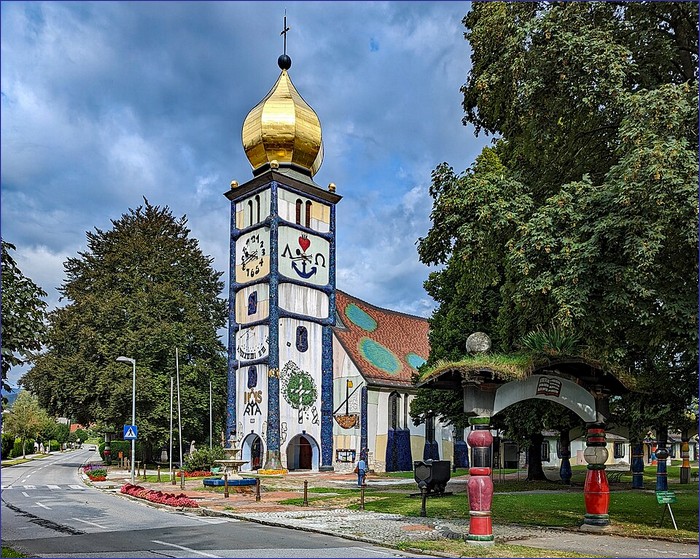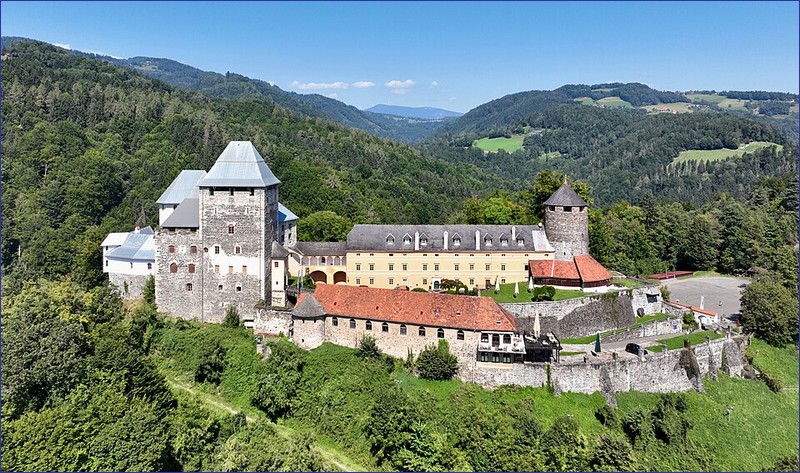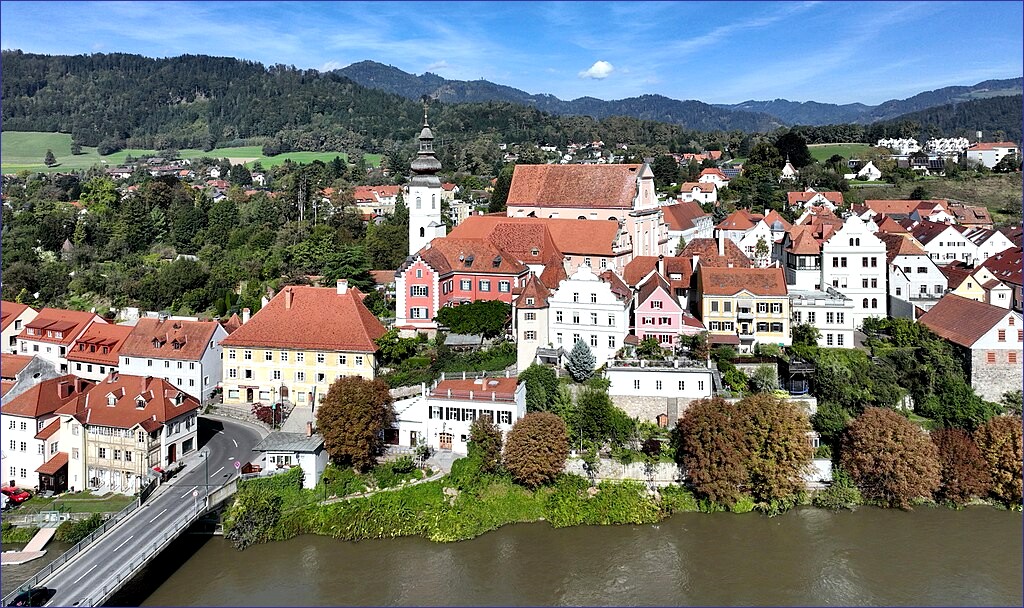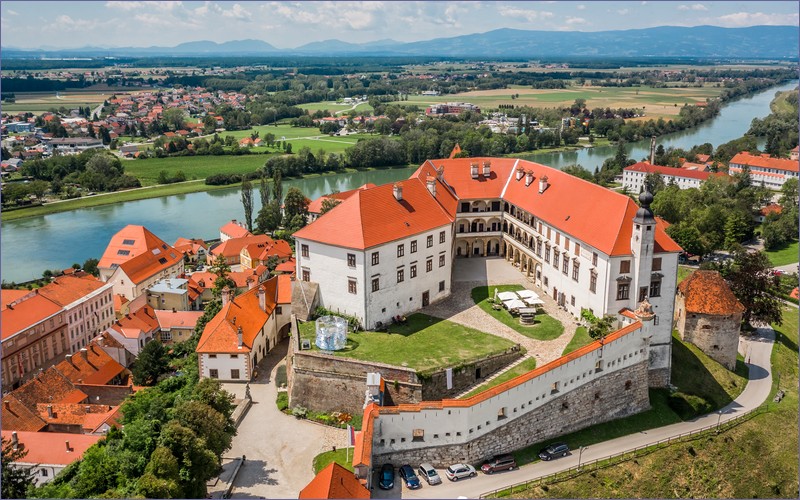Graz is the capital of Styria and the second largest city in the region. The city is also a major railway hub, and thanks to its well-developed accommodation base, it can serve as an excellent starting point for train excursions. From Graz, you can easily reach many destinations in Austria and neighboring countries by train.
I’ve prepared a post with suggestions for day trips from Graz by train. In the article, I’ve included places you can reach by train within two hours one way. If someone is willing to spend three hours one way on the train, they can even get to Ljubljana, for example. There are plenty of possibilities.
Direction Köflach
Krems in Steiermark (optional) – Near the train station are the ruins of a castle. Tours are only possible with a guide and require prior reservation.
Voitsberg (optional) – The district capital with a small town center. You’ll find Greißenegg Palace here, which is now privately owned and houses a restaurant. Also, the ruins of Obervoitsberg Castle, open only during cultural events. A preserved medieval tower, once part of the city walls, connects the center with the castle. Other notable buildings include the town hall. On the town’s outskirts, there are freestanding, unprotected mining machines.
Bärnbach (optional) – A small town of around 5,600 residents near Graz in the Voitsberg district. It has long been known for handmade glass production by the company Stölzle-Oberglas. Tourists mainly come to see St. Barbara’s Church, built in 1948 and remodeled forty years later by the famous Viennese architect Friedensreich Hundertwasser. Like his other works, the church features unusual design elements like irregularly shaped windows, a golden onion-shaped dome, and an arched roof. Inside, you’ll find stained-glass windows designed by Franz Weiss.
Bärnbach train station is located 2 kilometers from the town center.

Direction Deutschlandsberg
Trains of the S-Bahn lines 60 and 61 run on this route. Several other castles can be seen along the way, though they are privately owned and not open to the public.
Groß Sankt Florian – In the town center near the station, you can visit the small Styria Firefighting Museum. Besides local fire brigade history and old fire engines, the museum includes interactive exhibits for children.
Frauental an der Laßnitz (optional) – there’s a mini-zoo and an alpaca farm 2 km from the station,
Deutschlandsberg (optional) – About 2 km from the station stands Deutschlandsberg Castle, now a hotel and restaurant. Inside is a small archaeological museum called Archeo Norico (open April to October) focusing on regional history and archaeological finds. You can also see the parish church with a Baroque interior and a tower added in 1867.
Wies (optional) – a town with about 4,500 residents. Its main attraction is a castle first mentioned in 1280, which can only be admired from the outside as it now houses an agricultural school. Other landmarks include a parish church dating back to the late 18th and early 19th centuries.

Direction Bruck an der Mur and Leoben
Gratwein – On a hill 1.5 km from the Judendorf-Straßengel station stands the beautiful pilgrimage church Wallfahrtskirche Maria Straßengel. It’s one of the finest late Gothic buildings in Austria. The site has been a pilgrimage destination since the 12th century. The 48-meter-high tower was likely built in the 14th century by the same craftsmen who built St. Stephen’s Cathedral in Vienna. The interior features beautiful stained glass depicting legends of saints, Mary, and the Passion of Christ.
Stübing – 2.5 km from the station is Austria’s largest open-air museum, spread across more than 60 hectares. Over 100 historical buildings are on display, and there is a traditional inn serving regional food.
Deutschfeistritz (optional) – In this town, 1.5 km from the Peggau-Deutschfeistritz station, you can walk the Stations of the Cross trail up a hill and visit the old forge (Sensenwerk Deutschfeistritz Museum & Kulturverein), where staff explain traditional blacksmithing. The water-powered machines still work.
Frohnleiten – A picturesque town on the Mur River. The well-preserved old town is charming as a whole. Highlights include the parish church, the preserved Tabor city gate, and the district court building. 3.5 km south of town lies the beautifully restored Rabenstein Castle, which can be visited only with a guide and by prior arrangement.
Bärenschützklamm – From the Mixnitz Bärenschützklamm station, you can walk to the Bear Gorge in about an hour and continue along scenic mountain trails next to rushing water and rock formations. The gorge is open from May 1 to October 31, weather permitting.
Bruck an der Mur – A major railway junction. The town center is close to the station. In the main square, the late Gothic Kornmesser House (1495–1505), resembling Venetian palaces, stands out. There’s also a 17th-century wrought iron well. Nearby on a hill are the ruins of Landskron Castle, one of Austria’s oldest fortresses. Next to the ruins is a restored clock tower (Uhrturm).
Leoben – from Bruck an der Mur, change to S8 line trains toward Unzmarkt and get off at Leoben Hbf station. Leoben, with around 25,000 residents, is the largest city on the route and is known for its mining industry. The Mining University here is renowned well beyond Austria. Highlights include the richly decorated Hacklhaus townhouse, the preserved Customs Tower (Mautturm), and the City Theatre built in 1791. Kunsthalle, a mix of historic and modern architecture, houses exhibitions about regional history. The compact town center is very close to the train station.

Day trips from Graz by train – Direction Szentgotthárd
Feldbach – 2 km north of the town lies Kornberg Castle, privately owned. You can walk around the courtyard and enjoy a coffee. On select days, the castle and a miniature castles exhibition can be visited. It’s a popular wedding venue.
10 km north of the town stands the majestic Riegersburg Castle, built on a basalt cliff in 1170 on the site of a former Roman fortress. Its current appearance is from a 17th-century renovation. It was once one of the most powerful fortresses defending against the Ottoman Empire. Panoramic views are available from the hilltop, and you can take an elevator to the top.
On the outskirts of Feldbach, a private owner is slowly restoring Hainfeld Castle, which may be open to the public in the future.
Fehring (optional) – Near the station, there’s a private Milling Museum where visitors can learn how oils are pressed. The museum is run by the owners of the facility and includes a shop offering a wide range of organic products.
4 km south of the station is the so-called magical “Place of Power” with a forest chapel.
Szentgotthárd – The first station on the Hungarian side of the border. The town’s highlight is the former Cistercian Abbey with a Baroque church from the 18th century and monastery. The church has been recently renovated and is surrounded by a pleasant park. The town has a well-developed tourist accommodation base.
Direction Slovenia
From Graz, it’s easy to organize a day trip to Slovenia.
Maribor – The second-largest city in Slovenia. In my opinion, it’s an average city, and it’s better to transfer here to a train heading to the picturesque Slovenian town of Ptuj. Much of Maribor’s historic architecture was destroyed during World War II. The Main Square looks nice, the world’s oldest grapevine grows in the city center, and St. John the Baptist Cathedral as well as the university building opposite are worth seeing. A quick tour of the city takes about 1.5 hours.
Celje – A medium-sized Slovenian town. The quaint center is located right next to the train station. The main attraction is the castle located on a hill a few kilometers from the center. Due to the steep climb, it takes some time to reach it.
Related articles:
Train travel in Austria – a comprehensive guide
Narrow-gauge railways in Austria
Breitenauerbahn – a general overview
Stainzer Flascherlzug – a general overview
Murtalbahn – a general overview
